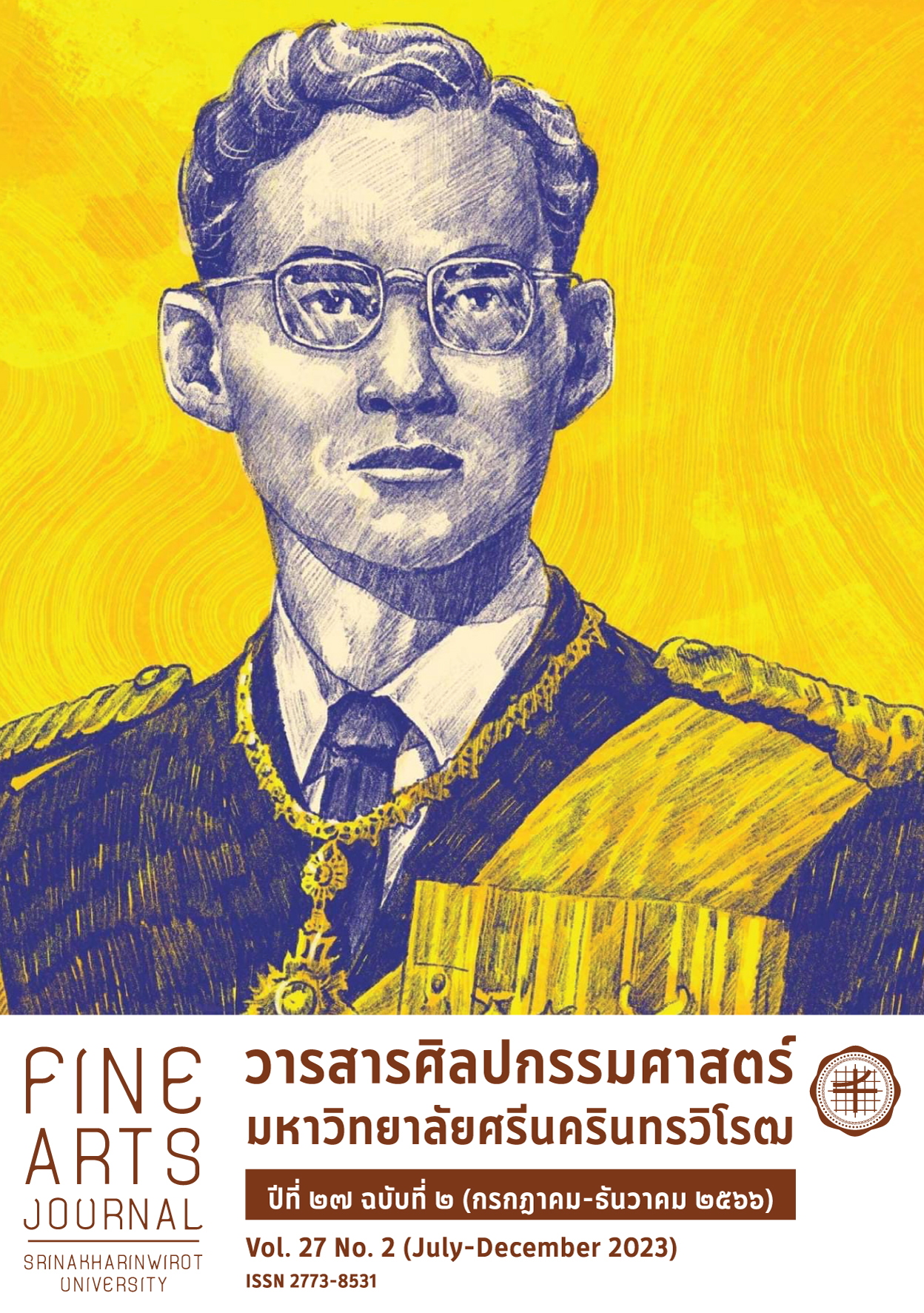CERAMIC ART REFLECTING HUMAN’S SOCIAL MEDIA BEHAVIOR
Keywords:
Ceramic art, Human behavior, Social mediaAbstract
The objective of the study entitled Ceramic Art Reflecting Human’s Social Media Behavior was to study the data of Gen Y’s behaviors about social media use that negatively effects the body, eyes, degenerative cervical bone, and headache through ceramic art. The Dan-Kwian indigenous soil was used with ceramic art's theory and process techniques. There was a decoration using fashion colors that were popular among the Gen Y group, namely UFO green, plastic pink, and purple protons. Furthermore, the artists’ concepts, namely Asaf Hanuka and Amarin Bupasiri, were applied to design and imagine according to the story of the impacts of the use of social media on the human body. These impacts were conveyed as a work of ceramic sculpture through shapes, textures, and colors. The electronic parts were also applied to the design. The analysis of the changes in shape from the negative effects of using social media was divided according to the posture of using social media that negatively affects the body into 3 categories (i.e., social media reflections, prying eyes, and applications with humans). The results showed that each category had a different number or size, and people were involved in every task. Emotions, aesthetics, and tactics were applied to the process of creating artworks of applied ceramic art mixed with electronics in order to remind people of the negative effects of social media use.
Downloads
References
ฐานิศา เนตรดี. (2559). โครงการสร้างสรรค์ประติมากรรมเพื่อสะท้อนพฤติกรรมสัตว์ป่าที่ถูกนำมาเลี้ยงในเมืองใหญ่
(วิทยานิพนธ์ปริญญามหาบัณฑิต). มหาวิทยาลัยศิลปากร, กรุงเทพมหานคร.
ภัททิรา กลิ่นเลขา. (2562). สถานการณ์รายการโทรทัศน์เพื่อการเรียนรู้สำหรับคนพิการทางสายตาของสถานีโทรทัศน์
ดิจิทัลปี 2559 - 2561: กรณีศึกษา สถานีโทรทัศน์ไทยพีบีเอส และสถานีโทรทัศน์แห่งประเทศไทย. วารสารคณะ
ศึกษาศาสตร์ มหาวิทยาลัยทักษิณ, 19(1), 152 -169.
มาเก็ตติ้ง อุปส์ (Marketing Oops!.) (2563, กุมภาพันธ์ 23). ผลสำรวจ “Global Digital 2019”. สืบค้นเมื่อ 10 เมษา
จาก https://www.marketingoops.com/reports/global-and-thailand-digital-trend-2019/
วาสนา ฬาวิน. (2558). คอมพิวเตอร์วิชั่นซินโดรม: กรณีศึกษาในเด็ก 1 ราย. ธรรมศาสตร์เวชสารมหาวิทยาลัย
ธรรมศาสตร์, 15(1), 136-142.
สามารถ จับโจร. (2554). ประติมากรรม เครื่องปั้นดินเผา (โครงการเฉลิมพระเกียรติ 84 พรรษา 85 ผลงานวิชาการ).
นครราชสีมา: มหาวิทยาลัยราชภัฎนครราชสีมา.
สํานักงานสถิติแห่งชาติ. (2564). อัตราการใชสมารทโฟนในประเทศไทย. สืบค้นเมื่อ 21 กุมภาพันธ์ 2564 จาก
http://www.nso.go.th/sites/2014/Pages/home.aspx
สุกรานต์ โรจนไพรวงศ์, และชฏาพันธ์ มลิพันธุ์. (2554). รู้ไว้...ปลอดภัย (กว่า): คูมือลดความเสี่ยงในการใช้มือถือและ
อินเทอร์เน็ต. กรุงเทพมหานคร: สํานักงานคณะกรรมการกิจการโทรคมนาคมแหงชาติ.
สุนิสา กิจจานุกิจศิลป. (2562). เทคโนโลยีซินโดรม:ปัญหาสุขภาพของคนยุคไอทีที่ไม่ควรไม่ข้าม. วารสาร มมร วิชาการ
ล้านนา มหาวิทยาลัยมหามกุฏราชวิทยาลัย วิทยาเขตล้านนา, 8(2), 94-98.
โสภณา จิรวงศ์นุสรณ, ณัฐวดี จิตรมานะศักดิ์, สาริน ฤทธิสาร, และพวงผกา ภูยาดาว. (2561). อันตรายที่แฝงมากับ
โทรศัพท์มือถือ. วารสารวิจัยราชภัฏพระนคร สาขาวิทยาศาสตร์และเทคโนโลยี, 13(1), 164-177.
อังคณา ศิริอำพันธ์กุล. (2562). ภาวะซึมเศร้ากับพฤติกรรมการใช้สื่อโซเชียล. วารสารปัญญาภิวัฒน์, 10(ฉบับพิเศษ),
-337.
อัมรินทร์ บุพศิริ. (2554). สังคมการเรียนรู้เพียงลำพัง (วิทยานิพนธ์ปริญญามหาบัณฑิต). มหาวิทยาลัยศิลปากร,
กรุงเทพมหานคร. สืบค้นเมื่อ 1 เมษายน 2565 จาก
http://www.sure.su.ac.th/xmlui/bitstream/handle/123456789/12939/fulltext.pdf?
sequence=2&isAllowed=y
Asaf Hanuka. (2021, March 15). The Realist. Retrieved April 7, 2022, from
Downloads
Published
How to Cite
Issue
Section
License

This work is licensed under a Creative Commons Attribution-NonCommercial-NoDerivatives 4.0 International License.






